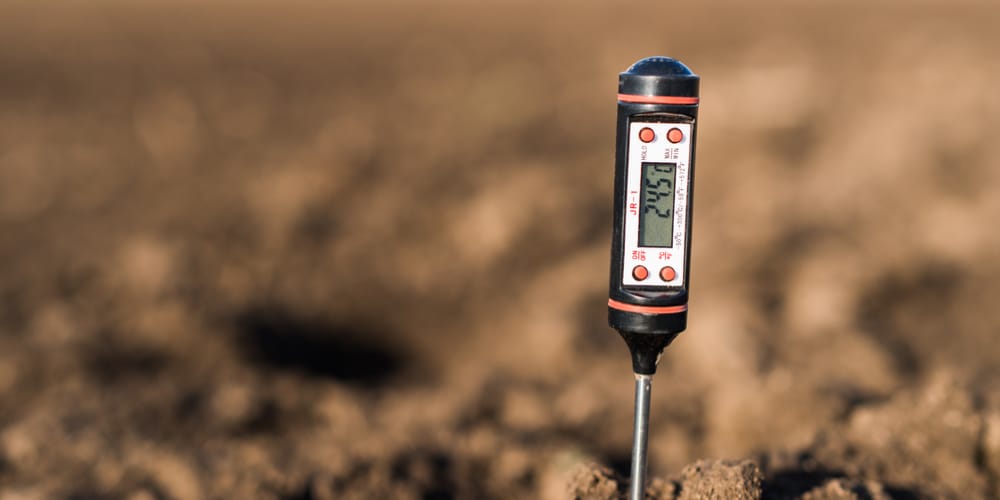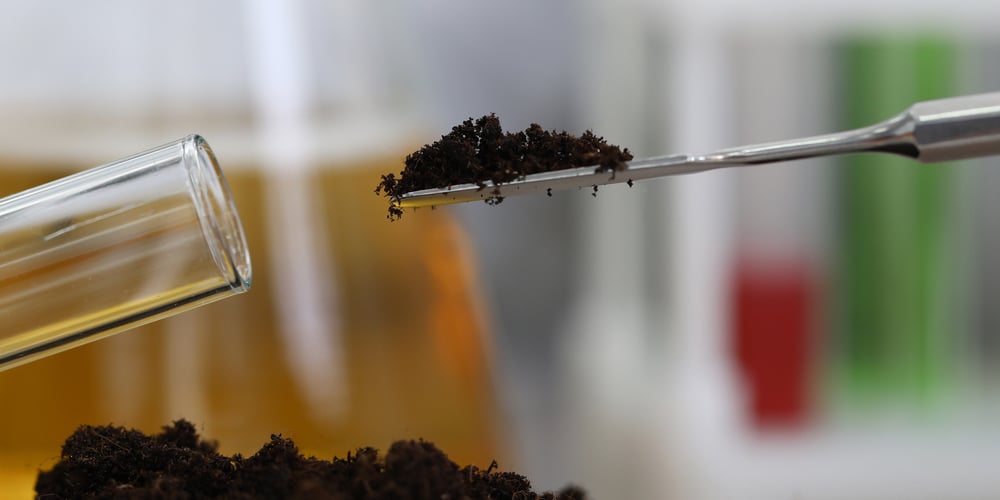Soil Composition
When you embark on spring gardening, knowing your soil’s composition is crucial.
Soil is a blend of minerals, organic matter, water, and air, each playing a critical role in the health of your plants.
- Minerals: These are the sand, silt, and clay that define your soil’s texture.
- Organic Matter: Decomposed plant and animal residues enrich your soil.
- Water: The lifeblood for plants, held differently depending on soil type.
- Air: Good soil structure should have adequate space for air.
To categorize soil, consider its primary components:
| Soil Type | Characteristics |
|---|---|
| Sandy | Drains quickly, low nutrients |
| Clay | Retains water, nutrient-rich |
| Silt | Fine particles, prone to compaction |
| Loamy | Balanced mix, ideal for gardening |
Your soil’s composition affects water retention, nutrient availability, and aeration. The optimal blend for most plants is loam, a balanced mix. If your soil leans towards clay or sand, amending it becomes necessary to approach that loamy ideal.
- Perform a Jar Test: Fill a clear jar with soil and water, shake, and let it settle to see your soil’s layers.
- Feel Test: Take damp soil and rub it between your fingers. The feel of the soil can help you determine its type.
Soil Testing Procedures
To ensure a thriving garden, it’s crucial to test your soil in spring. These testing steps will guide you in determining the pH level and nutrient content, allowing you to amend the soil precisely for optimal plant growth.
Sampling Soil
- Select random spots: To get a comprehensive sample, choose various locations in your garden.
- Dig deep: Collect soil from 6 inches deep to include root-zone soil.
- Sample mixing:
- Place all individual samples in a clean container.
- Mix thoroughly to create a composite sample.
- Dry the soil: Spread the sample on clean paper and let it air-dry at room temperature.
Soil pH Testing
- Use a test kit: Reliable soil pH test kits are available, which typically involve adding soil to a chemical solution and observing the color change.
- DIY methods: A simple DIY fizz test can indicate free lime, affecting pH adjustments.
- Send to a lab: For precise results, consider sending your sample to an extension service or soil lab.
Nutrient Level Assessment
- Macro-nutrients: Focus on key nutrients like nitrogen, phosphorus, and potassium, which are critical for plant health.
- Trace elements: Essential in smaller amounts, these include iron, manganese, and zinc.
- Get a soil test: Purchase a soil test kit or send your sample to a professional testing service to get detailed nutrient level information.
- Interpretation: Use the provided guidelines from your kit or service to understand what your soil may need.
Amending Soil
Before you begin planting this spring, it’s essential to ensure your soil is in top condition. Amending your soil correctly can lead to healthier plants and a more bountiful garden.
Adjusting Soil pH
- Test Your Soil’s pH: This should be your first step. Most plants thrive in soil with a pH between 6.0 and 7.0. You can purchase a soil test kit from a local garden center or use a professional testing service.
- Amendments to Adjust pH:
- For acidic soil (pH below 6.0), consider adding lime to raise the pH.
- If your soil is alkaline (pH above 7.0), organic materials like sulfur or peat moss can help lower the pH.
Improving Soil Structure
- Sandy Soils:
- Add organic matter to increase water and nutrient retention.
- A mixture of compost and aged manure works well for this purpose.
- Clay Soils:
- Incorporate coarse sand or fine gravel to enhance drainage.
- Mixing in organic matter will also help to loosen and aerate the soil.
Incorporating Organic Matter
- Benefits of Organic Matter:
- Improve overall soil fertility.
- Enhance the soil’s ability to hold water and nutrients.
- Sources of Organic Matter:
- Compost: a balanced source of nutrients for your garden soil.
- Aged Manure: provides rich nutrients and can improve soil structure.
- Leaf Mold: excellent for water retention and is usually free if you have deciduous trees.
It’s important to mix any amendments thoroughly into the soil to distribute the benefits evenly throughout your garden. Allow time for the soil to integrate these amendments before you begin planting.
Timing of Soil Amendments
Spring beckons a crucial period for addressing your garden’s needs. Before the active growing season takes off, testing and amending your soil is paramount to ensuring a fertile environment for your plants. Here’s how you should go about it:
- Soil Testing:
- Begin with a soil test to determine nutrient levels and pH balance.
- Early spring is ideal, as it gives you adequate time to implement changes before planting.
- Amendments Application:
- Organic Matter:
- Compost: Introduce compost to improve structure and fertility.
- pH Adjustments:
- If your soil is too acidic, you might need to add lime to raise the pH.
- Conversely, if it’s too alkaline, sulfur can help lower the pH to the desired level.
- Organic Matter:
- Timing Considerations:
- Post-testing, allow time for amendments to integrate. It could take several weeks for changes to fully take effect.
- Some experts recommend amending soil in the fall, but spring amendment is also beneficial, especially if you missed the fall schedule.
- Weather Conditions:
- Ensure the soil isn’t too wet, as working with soggy soil can compromise its structure.
- Aim for a day when the soil is moist but not saturated to make amendments.
Monitoring and Maintaining Soil Health
Healthy soil is the bedrock of a thriving garden.
As spring approaches and gardeners get ready to plant, ensuring your soil is in top condition is crucial.
Here’s how to monitor and maintain the health of your soil:
- Test Your Soil:
- Texture and Structure: Assess the texture by feeling it; sandy soils feel gritty, while clay soils are sticky.
- pH Level: Most plants prefer a pH of 6 to 7.
- You can use a simple test kit to measure the acidity or alkalinity.
- Nutrient Content: Key nutrients include nitrogen (N), phosphorus (P), and potassium (K). A soil health assessment can guide you on this.
- Amend Your Soil:
- For acidity: Incorporate lime to raise the pH.
- For alkalinity: Apply sulfur to lower the pH.
- To increase fertility:
- Compost: Rich in organic matter to boost nutrient levels.
- Manure: A natural fertilizer providing a range of nutrients.
- Regular Maintenance:
- Aeration: Prevent soil compaction to ensure root growth and water infiltration.
- Mulching: Protects soil from erosion and maintains moisture.
- Crop Rotation: Prevents depletion of specific soil nutrients.
Here is a checklist for you:
- Conduct a soil test
- Amend soil according to the test results
- Plan regular soil aeration and mulching
- Practice crop rotation
Remember: Regular checking and adjustments keep your garden’s foundation strong for the entire growing season.
Follow these steps to ensure a bountiful harvest.
Frequently Asked Questions
Before diving into your garden this spring, it’s crucial to know how to properly test and amend your soil.
From prepping new beds to enriching your garden, these FAQs will guide you through creating the ideal growing environment.
What are the initial steps for preparing soil for a first-time garden?
- Begin by clearing the area of weeds, debris, and large stones to ensure a clean canvas.
- Loosen the soil with a spade or tiller to improve aeration and drainage.
What methods are available for testing soil nutrients at home?
- Purchase a home soil test kit for a simple, quick analysis of nutrient levels.
- Use DIY methods, such as the vinegar and baking soda test, to check for alkalinity or acidity.
How can soil pH levels be accurately tested?
- Accurate soil pH can be tested using electronic pH meters or pH indicator strips that provide instant readings.
- For a more detailed analysis, consider sending a soil sample to a local extension service.
What processes are involved in amending soil during the spring season?
- Test soil early to determine what amendments are needed before planting.
- Incorporate organic matter, like compost or aged manure, to improve soil structure and fertility.
Which strategies are effective for transforming poor quality soil into fertile ground?
- Mix in organic mulch annually to add stable humus to the soil.
- Relocate your compost pile regularly to spread the wealth of nutrients across different areas.
What are the fastest techniques to improve and enrich garden soil?
- Add a layer of compost or well-rotted manure to quickly provide nutrients and enhance soil texture.
- Use green manures or cover crops to fix nitrogen and increase organic matter content efficiently.
Last update on 2025-06-06 / Affiliate links / Images from Amazon Product Advertising API




